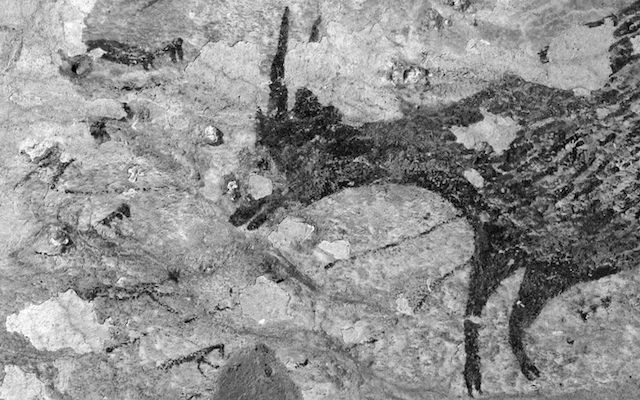If they knew the endgame would be Mauriozo Cattlan’s bannana taped to a gallery wall, perhaps those responsible for one of the earliest examples of cave art discovered might not have bothered. The 44,000-year-old rock art, discovered on the Indonesian island Sulawesi, depicts human figures hunting buffalo and wild pigs in a reddish-brown pigment. ‘We don’t know what it means, but it seems to be about hunting and it seems to maybe have mythological or supernatural connotations,’ Adam Brumm, an archaeologist at Griffith University in Brisbane told the Nature journal. To determine the age, scientists studied to what extent radioactive uranium in the minerals making up the pigment had decayed into thorium, allowing them to conclude they has been painted at least 43,900 years ago.
‘It has always been assumed that the tradition of figurative painting arose in Europe,” Alistair Pike, an archaeological scientist at the University of Southampton told Nature. ‘This shows the tradition does not have its origins in Europe.’
12 December 2019
